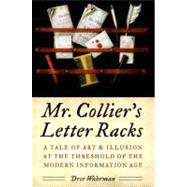From Still Life to the Screen Print Culture, Display, and the Materiality of the Image in Eighteenth-Century London

From Still Life to the Screen Print Culture, Display, and the Materiality of the Image in Eighteenth-Century London
- ISBN 13:
9780300196351
- ISBN 10:
0300196350
- Format: Hardcover
- Copyright: 10/28/2013
- Publisher: Paul Mellon Centre BA
.svg) Rent
From $28.07
Rent
From $28.07
List Price $45.00 Save
| TERM | PRICE | DUE |
|---|---|---|



List Price $45.00 Save $0.44
Special Order: 1-2 Weeks
We Buy This Book Back!
Free Shipping On Every Order
Note: Supplemental materials are not guaranteed with Rental or Used book purchases.
Extend or Purchase Your Rental at Any Time
Need to keep your rental past your due date? At any time before your due date you can extend or purchase your rental through your account.
Summary
From Still Life to the Screen explores the print culture of 18th-century London, focusing on the correspondences between images and consumer objects. In his lively and insightful text, Joseph Monteyne considers such themes as the display of objects in still lifes and markets, the connoisseur’s fetishistic gaze, and the fusion of body and ornament in satires of fashion. The desire for goods emerged in tandem with modern notions of identity, in which things were seen to mirror and symbolize the self. Prints, particularly graphic satires by such artists as Matthew and Mary Darly, James Gillray, William Hogarth, Thomas Rowlandson, and Paul Sandby, were actively involved in this shift. Many of these images play with the boundaries between the animate and the inanimate, self and thing. They also reveal the recurring motif of image display, whether on screens, by magic lanterns, or in “raree-shows” and print-shop windows. The author links this motif to new conceptions of the self, specifically through the penetration of spectacle into everyday experience.









